We did something recently that most real estate companies probably don’t do: we analyzed every single review left by our tenants.
We wanted to know what actually mattered to them. Was it the loading docks? The climate control? The all-inclusive pricing? The 24/7 access?
Here’s what we found: General Managers were mentioned far more often than any physical feature of our buildings.
Not loading docks. Not industrial racking. Not even the thing we thought was our biggest differentiator: short-term leases and all-inclusive monthly payments.
Our tenants kept talking about the people running their buildings:
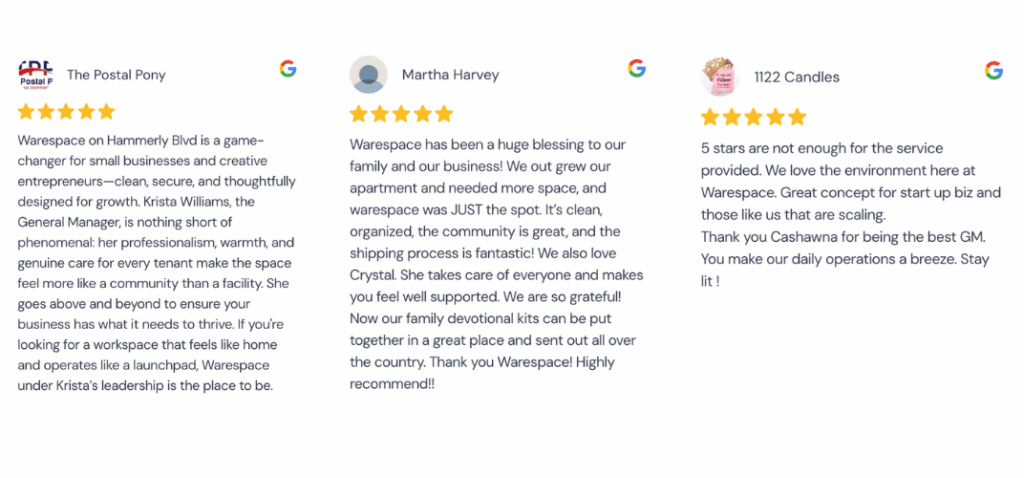
At first, we thought this was nice. A pat on the back for our team. But then it hit us: this is what makes the difference between a landlord and a partner.
The Problem with Traditional Warehouse Property Management
Here’s what typically happens when a small business leases warehouse space:
You sign the lease. You get the keys. Maybe you get a phone number for “emergencies.” And then… you’re on your own.
Need something fixed? Submit a ticket. Wait 3-5 business days. Hope someone shows up.
Got a delivery arriving when you’re meeting with a client? Better cancel that meeting – or miss that shipment.
Package needs to go out today for a customer deadline? Block off 2 hours to drive to FedEx.
Building maintenance issue? Now you’re the one coordinating with contractors, managing repairs, and dealing with invoices you didn’t budget for.
Most warehouse landlords treat management as an afterthought – if they have anyone on-site at all. The model is: collect rent, handle emergencies when legally required, otherwise stay hands-off.
For small business owners already wearing 47 hats, this means warehouse space becomes one more thing to manage instead of one less thing to worry about.
So what’s the alternative? Here’s how on-site warehouse management should actually work.
What On-Site Warehouse Management Should Look Like
Let’s get specific about what happens when you have a dedicated GM who’s at the building every day, knows your business, and genuinely wants you to succeed.
1. Shipping & Receiving Support for Small Businesses
The typical warehouse experience: You’re in a client meeting or on a sales call when the carrier shows up for pickup. You miss it. Now your customer’s shipment is delayed and you’re scrambling to explain why.
The WareSpace experience: Your GM handles daily pickups with UPS, USPS, and FedEx. They receive inbound deliveries when you’re not on-site. You stay focused on your business while they handle the logistics coordination.
The math: That’s 5-8 hours per week saved on shipping logistics alone. For a business owner, that time goes back into sales, product development, or – revolutionary concept – taking a day off.
2. Full-Service Warehouse Facility Management
Small business owners didn’t start their companies to become facilities managers. But in most warehouse spaces, that’s exactly what happens.
HVAC acting up? You’re calling contractors. Loading dock needs maintenance? That’s on you. Parking lot needs plowing? Hope you know a guy.
WareSpace GMs handle all of it. They coordinate repairs, manage vendors, maintain common areas, and solve problems before tenants even know there was a problem.
As Joseph, our COO, notes: “I know when I go to a building, if the manager’s on top of it or not, I could see it within ten seconds of walking into a building. I could see how the trash looks, could see how the building looks. I could see how the windows look.”
That level of attention to detail – where every aspect of building management is handled proactively – means tenants can focus entirely on their business operations.
3. Building Community in Coworking Warehouse Space
Here’s something that doesn’t show up in lease agreements: the value of knowing your neighbors.
GMs introduce tenants who serve complementary markets. The connections happen organically – in hallways, at loading docks, during conversations about what each business does.
These introductions lead to referrals, shared resources during busy seasons, and partnerships that wouldn’t exist if everyone was just collecting their keys and working in isolation.
You can’t quantify that on a spreadsheet. But you can’t replicate it without humans who actually pay attention.
4. Proactive Warehouse Space Management
Questions about your lease? Your GM knows the answer. Need to size up or down? They’ll walk you through available options. Looking for a specific piece of equipment or local vendor? They’ve probably worked with someone who can help.
Traditional property managers are reactive: “Submit a ticket and we’ll get back to you in 3-5 business days.”
WareSpace GMs are proactive: “Hey, I noticed you’ve been getting a lot more shipments lately. Want to talk about upgrading to a bigger unit before you run out of space?”
The difference? One treats you like a tenant. The other treats you like a business they want to see succeed.
But this level of service doesn’t happen by accident. It requires a fundamentally different approach to warehouse operations.
At WareSpace, we talk about three core values:
- Think strategically
- Execute smartly
- Remain human
That third one shows up in how we hire GMs, how we empower them, and what we expect from them.
We don’t hire property managers who show up once a week to collect checks. We hire people who genuinely like helping small business owners, who take pride in running a building well, and who understand that their job is to make tenants’ lives easier – not just maintain a facility.
The Proof: What This Looks Like Across Every Location
Here’s what happens when you combine the right infrastructure with people who actually care.
From Parking Lot Meetings to Professional Headquarters
Chaka Howard was running a million-dollar events marketing company for brands like White Claw and Foot Locker, all while coordinating 200+ brand ambassadors from her living room. She was inviting strangers into her home for meetings and having clients meet her in parking lots – unsafe, and unprofessional.
When she discovered WareSpace, she wasn’t even looking for office space. But GM Krista’s welcoming approach made the difference.
Now? Professional conference rooms instead of her dining room table.
Direct deliveries instead of scattered storage units.
And networking opportunities that landed her two new clients at a building happy hour.
As Chaka put it: “I am a big business. I need to run like a big business. I deal with a lot of top brands… I need to present that to my clients as well.”
The impact of great on-site management shows up in how businesses actually grow. From e-commerce brands doubling revenue after moving in, to contractors expanding from single units to multiple locations, to manufacturers scaling from garage operations to standalone facilities, the pattern repeats across our portfolio.
The Philadelphia Transformation
Will Butera, founder of Kick Block, started his business in his parents’ basement. As orders took off, he was dealing with six-foot ceilings, scattered storage, and constant trips to FedEx.
After moving into WareSpace Philadelphia, everything changed. As Will said: “We’ve doubled our business since moving here. Now we can actually produce enough and ship it fast – it’s made everything easier.”
The infrastructure mattered – but so did the support. Daily carrier pickups meant no more wasted hours on shipping runs. Having someone on-site meant he could focus on growth instead of facilities management.
This isn’t about two exceptional stories. It’s a pattern repeated across our entire portfolio.
From our Twin Cities location, tenants consistently mention Mike, their on-site General Manager:

From our Dallas location, tenants describe similar experiences with Chris:

And across every other market:
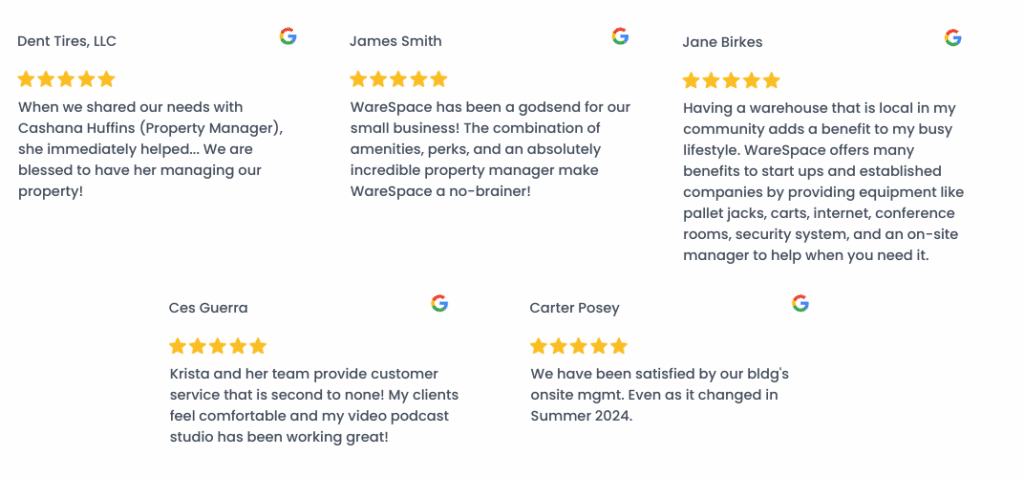
Cashana. Khadijah. Mike. Meghan. Krista. Chris; and those are just the ones tenants mentioned by name in the last few months.
The pattern holds across every location.
Finding, hiring, and retaining people who treat tenant success as their mission takes years of intentional culture-building. It requires screening for emotional intelligence, not just facilities management experience. It requires empowering GMs to make decisions without needing corporate approval.
Most warehouse operators won’t do it because it costs more upfront.
The Bottom Line
Small business owners are already managing inventory, marketing, sales, customer service, accounting, and a hundred other things. Warehouse space should be one less thing to worry about – not one more.
When we analyzed what our tenants actually value, the answer was clear: they value people who make their lives easier.
Loading docks are important. Climate control matters. Flexible leases are essential. But none of those features do anything without humans who care about tenant success.
Want to see the difference on-site management makes? Book a tour at any WareSpace location and meet the GM who’ll be running your building. We think you’ll understand pretty quickly why our tenants won’t stop talking about them.


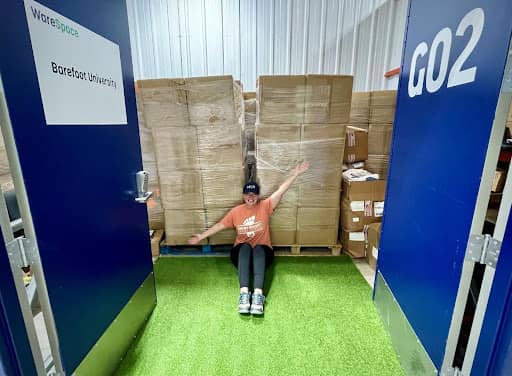


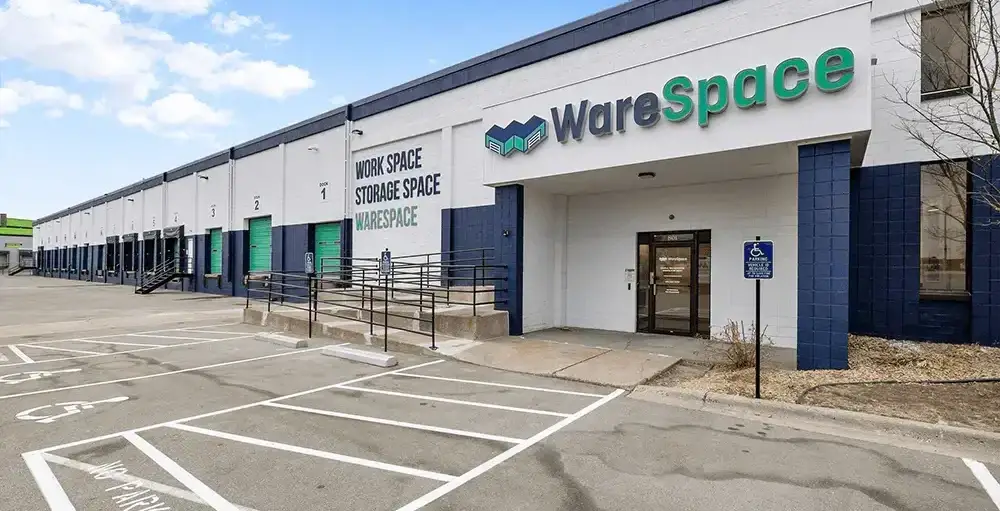
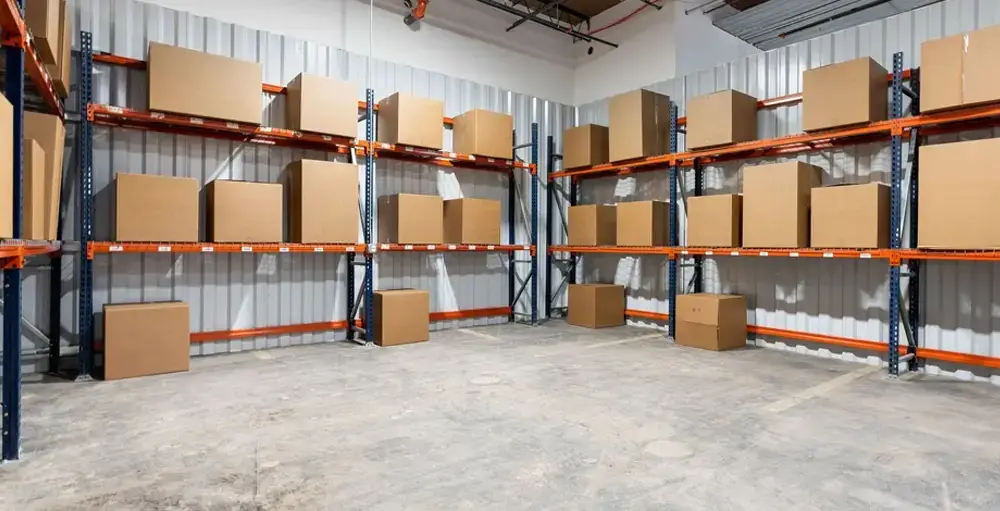
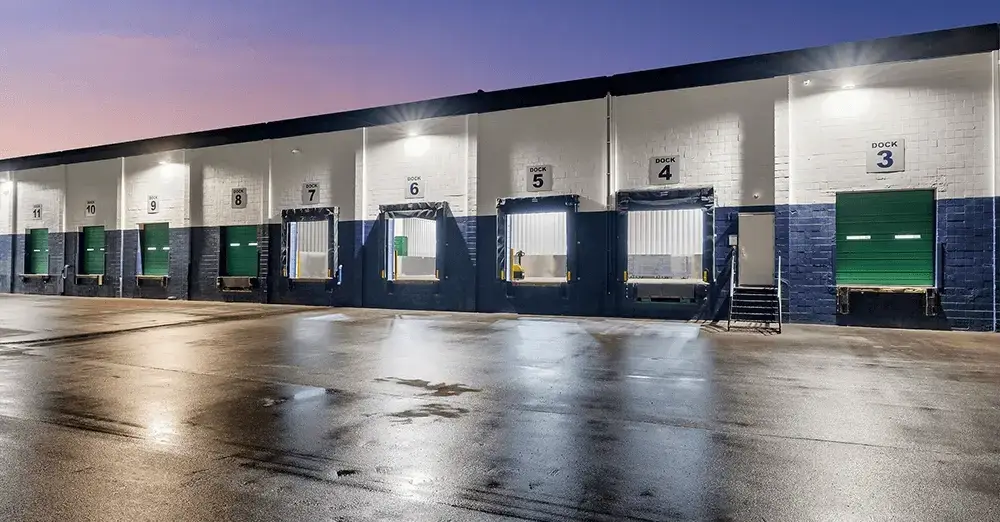
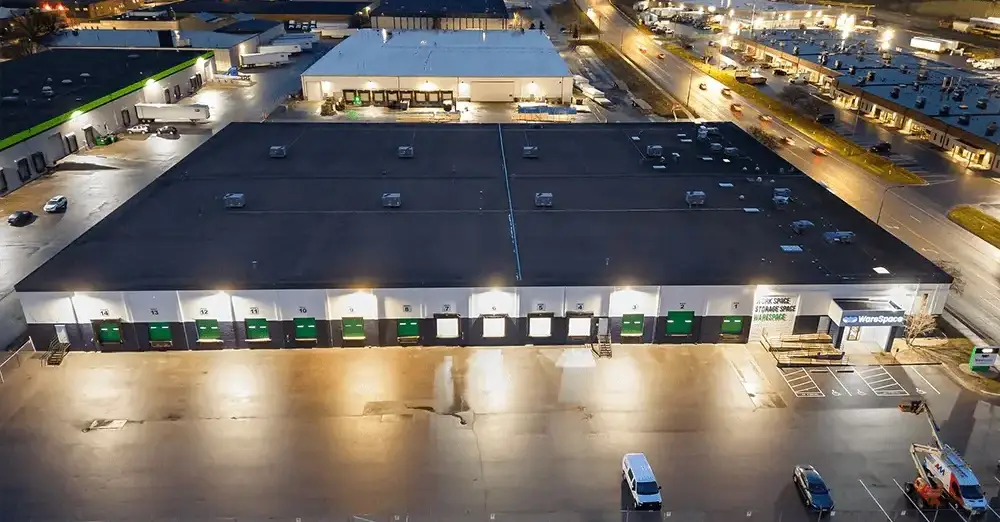











 ►
Explore 3D Space
►
Explore 3D Space